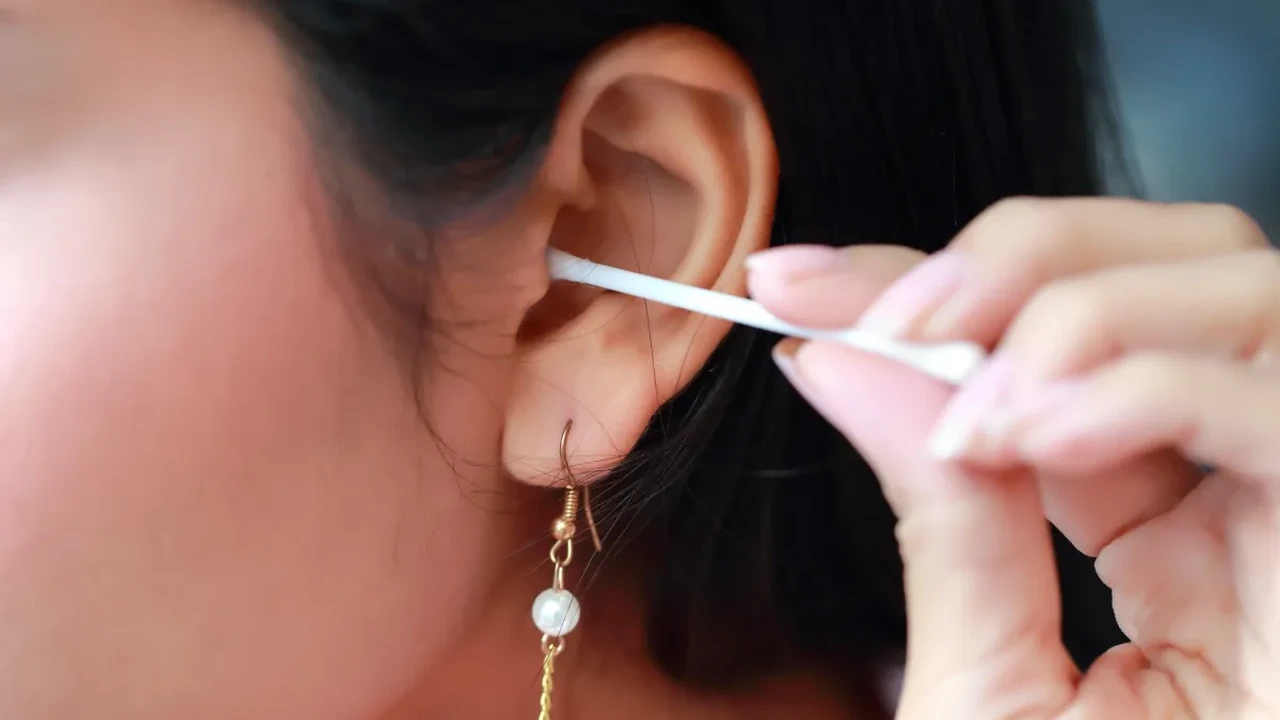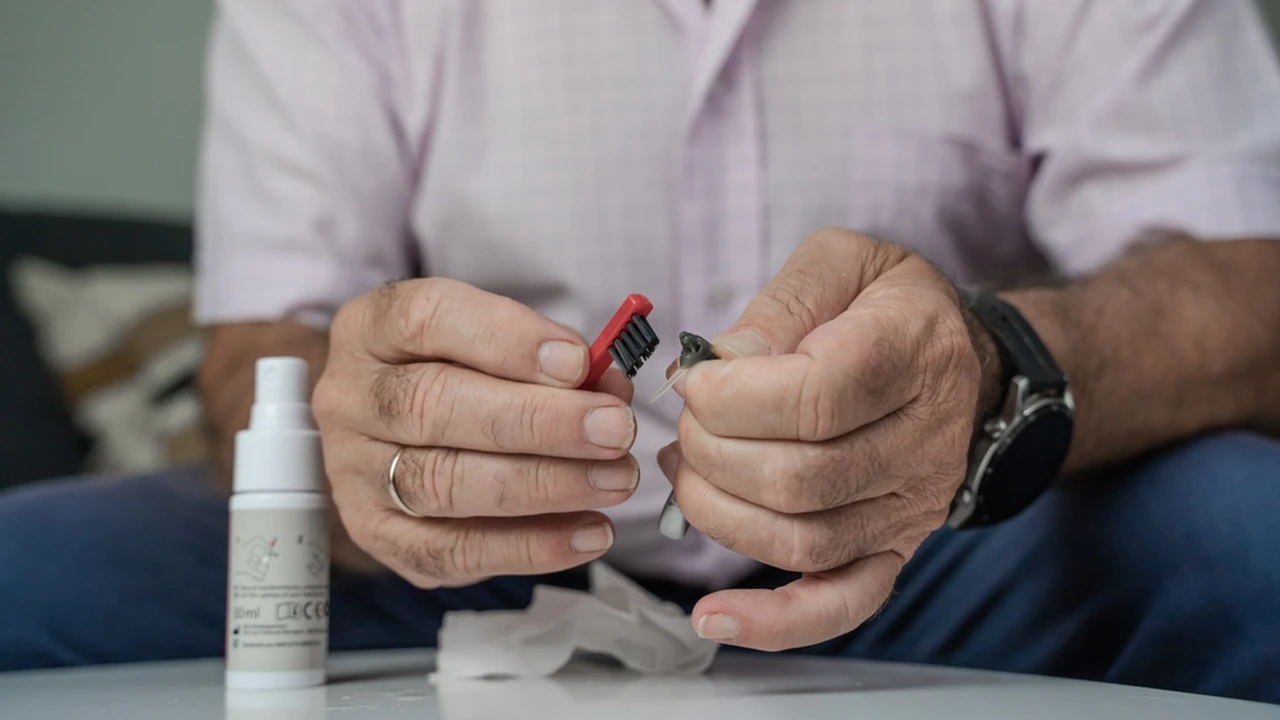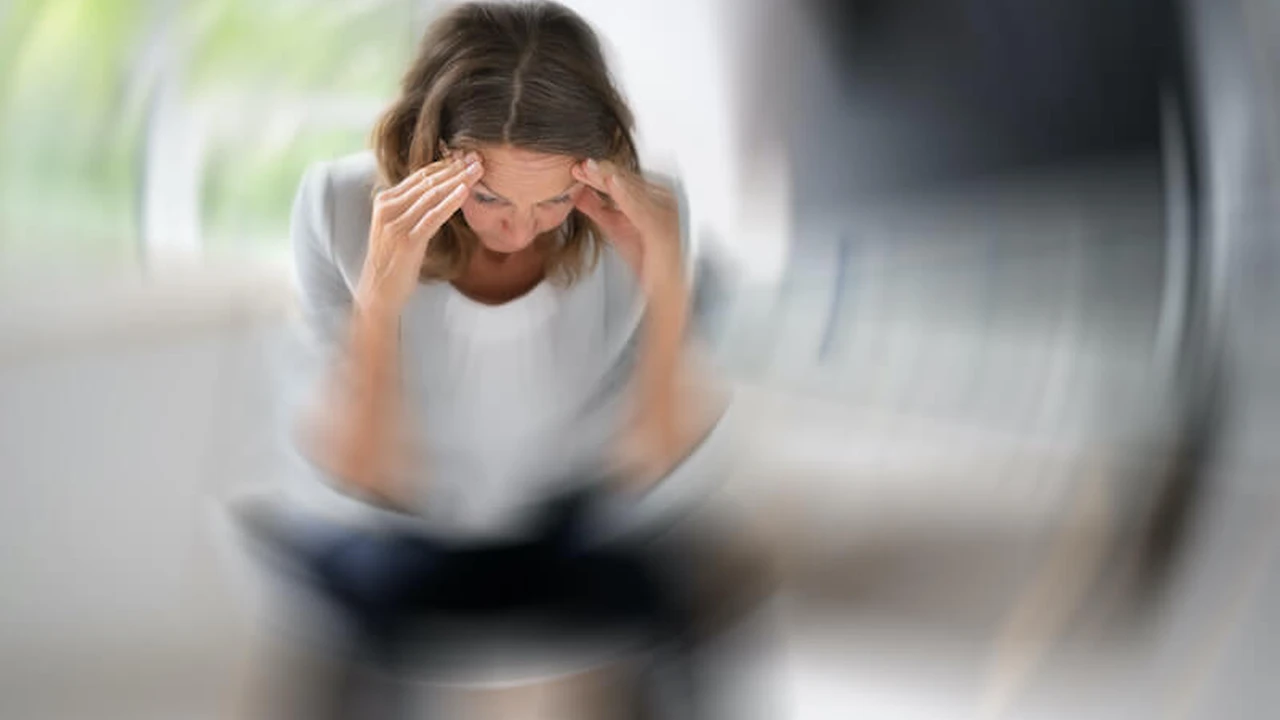Earwax Buildup and Hearing Loss Solutions
Understand how earwax buildup can cause temporary hearing loss. Learn safe and effective methods for earwax removal and prevention.

Understand how earwax buildup can cause temporary hearing loss. Learn safe and effective methods for earwax removal and prevention.
Earwax Buildup and Hearing Loss Solutions
Understanding Earwax The Body's Natural Protector
Let's talk about earwax, or as the medical folks call it, cerumen. It often gets a bad rap, but it's actually super important for your ear health. Think of it as your ear's natural defense system. It’s produced by glands in the outer part of your ear canal and serves several crucial functions. First off, it acts as a natural lubricant, preventing the skin inside your ear from drying out and getting itchy. Secondly, it’s a fantastic filter. Earwax traps dust, dirt, and other tiny particles, stopping them from reaching the more delicate inner ear structures. It even has antibacterial and antifungal properties, which help prevent infections. Pretty neat, right?
Normally, your ears are self-cleaning. As you talk, chew, and move your jaw, the old earwax and trapped debris are slowly moved out of the ear canal to the opening, where they dry up and flake off. Most of the time, you don't even notice it happening. This natural process works perfectly for the vast majority of people.
When Good Earwax Goes Bad The Problem of Buildup
So, if earwax is so great, why are we talking about it causing problems? Well, sometimes this natural process gets a little out of whack, leading to what we call earwax impaction or buildup. This happens when earwax accumulates and hardens, completely blocking the ear canal. When this occurs, it can lead to a range of uncomfortable symptoms, and yes, temporary hearing loss is a big one.
Imagine trying to listen to someone through a thick wall – that's kind of what it's like when your ear canal is blocked by wax. The sound waves can't travel effectively to your eardrum, resulting in muffled hearing or a feeling of fullness in your ear. Other common symptoms include earache, ringing in the ear (tinnitus), dizziness, and even an irritating cough. It's not fun, and it can really impact your daily life.
Common Causes of Excessive Earwax Accumulation
Why does earwax build up in some people and not others? There are several reasons:
- Using Cotton Swabs (Q-tips) and Other Objects: This is probably the biggest culprit! While it feels like you're cleaning your ears, you're actually often pushing the wax deeper into the ear canal, compacting it against the eardrum. This makes it much harder for your ears to self-clean and can lead to impaction.
- Narrow or Abnormally Shaped Ear Canals: Some people naturally have ear canals that are smaller or have an unusual shape, making it more difficult for wax to exit naturally.
- Overproduction of Earwax: In some cases, glands simply produce more wax than necessary, leading to faster buildup.
- Wearing Hearing Aids or Earbuds: These devices can sometimes prevent the natural outward migration of earwax. They can also push wax deeper into the canal.
- Age: As we get older, earwax tends to become drier and harder, making it more prone to impaction.
- Hairy Ear Canals: More hair in the ear canal can sometimes trap wax and prevent its natural expulsion.
Safe and Effective Earwax Removal Methods At Home Solutions
If you suspect you have earwax buildup, the first rule of thumb is: DO NOT use cotton swabs or anything else to poke around in your ear canal! Seriously, resist the urge. You'll likely make things worse. Instead, there are a few safe at-home methods you can try for mild cases:
Earwax Softening Drops and Oils for Gentle Removal
The goal here is to soften the wax so it can naturally work its way out. You can find over-the-counter ear drops specifically designed for this, often containing carbamide peroxide. Alternatively, you can use household items like:
- Mineral Oil: A few drops warmed to body temperature can be very effective.
- Baby Oil: Similar to mineral oil, it's gentle and helps soften the wax.
- Glycerin: A natural humectant, it draws moisture into the wax, softening it.
- Hydrogen Peroxide (diluted): A few drops of a 3% hydrogen peroxide solution mixed with an equal amount of water can help break down wax. You'll hear a fizzing sound, which is normal.
How to use them: Lie on your side with the affected ear facing up. Place 2-3 drops into your ear canal. Stay in that position for 5-10 minutes to allow the drops to penetrate the wax. You might want to place a cotton ball loosely in your ear to prevent the oil from dripping out when you sit up. Do this once or twice a day for a few days. The wax should gradually soften and come out on its own.
Ear Syringing and Irrigation Kits for Home Use
Once the wax is softened, some people find ear irrigation helpful. You can buy ear irrigation kits at most pharmacies. These usually involve a bulb syringe or a small spray bottle.
How to use them: Fill the syringe with warm (not hot!) water. Tilt your head over a basin or towel, with the affected ear facing down. Gently squirt the water into your ear canal. The water should flow out, hopefully bringing some softened wax with it. Repeat a few times. Important: Do not use this method if you have a perforated eardrum, ear tubes, or a current ear infection. If you're unsure, always consult a doctor first.
When to Seek Professional Earwax Removal Medical Interventions
While at-home remedies can work for many, sometimes professional help is needed. You should definitely see a doctor or an audiologist if:
- Your symptoms are severe or don't improve after a few days of home treatment.
- You experience sudden hearing loss, severe ear pain, or discharge from your ear.
- You have a history of ear infections, a perforated eardrum, or ear surgery.
- You have diabetes or a weakened immune system, as ear infections can be more serious.
- You wear hearing aids and suspect wax buildup is affecting their performance.
Professional Earwax Removal Techniques Explained
When you visit a healthcare professional, they have several safe and effective methods for removing stubborn earwax:
- Manual Removal (Curettage): The doctor will use a special instrument called a curette, which is a small, curved tool, to gently scoop out the wax. This is often done under direct visualization using an otoscope (an instrument to look into your ear).
- Microsuction: This is a very common and effective method. A small, low-pressure suction device is used to vacuum the wax out of the ear canal. It's precise and generally well-tolerated.
- Ear Irrigation (Professional): Similar to home irrigation but performed with specialized equipment and under medical supervision, ensuring the correct water temperature and pressure.
Preventing Future Earwax Buildup Proactive Strategies
Once you've got your ears clear, the goal is to keep them that way! Prevention is key:
- Stop Using Cotton Swabs: We can't stress this enough. Your ears are designed to clean themselves.
- Regular Use of Softening Drops: If you're prone to buildup, your doctor might recommend using a few drops of mineral oil or an over-the-counter earwax softener once or twice a week to keep the wax soft and moving.
- Regular Check-ups: If you wear hearing aids or have a history of impaction, regular check-ups with your audiologist or doctor can help catch buildup before it becomes a problem.
- Clean Hearing Aids and Earbuds: Make sure to regularly clean your hearing aids and earbuds according to the manufacturer's instructions. This prevents them from pushing wax deeper into your ear.
Impact of Earwax on Hearing Aids and Their Performance
For those who rely on hearing aids, earwax buildup can be a particularly frustrating issue. It's one of the most common reasons for hearing aid malfunction or reduced performance. Here's why:
- Blocked Sound Output: Earwax can block the tiny sound port of your hearing aid, preventing sound from reaching your eardrum. This can make your hearing aid seem like it's not working, or that the volume is too low.
- Feedback: If wax builds up around the hearing aid, it can create a seal that causes sound to leak out and be picked up by the microphone, leading to annoying whistling or feedback.
- Damage to Components: In some cases, wax can get into the delicate internal components of the hearing aid, causing damage that requires professional repair.
If you wear hearing aids and notice a sudden decrease in sound quality, intermittent sound, or increased feedback, earwax buildup is often the first thing to check. Regular cleaning of your hearing aids and routine ear checks are essential to keep both your ears and your devices working optimally.
Recommended Products for Safe Earwax Management
While professional removal is sometimes necessary, many people can manage earwax at home with the right products. Here are a few popular and well-regarded options, along with their typical use cases and approximate pricing:
1. Debrox Earwax Removal Kit
Description: Debrox is one of the most widely recognized over-the-counter earwax removal brands. Its active ingredient is carbamide peroxide, which releases oxygen when it comes into contact with earwax, helping to soften and loosen it. The kit usually includes the drops and a soft rubber bulb syringe for irrigation.
Use Case: Ideal for mild to moderate earwax buildup, or for regular maintenance if you're prone to impaction. It's a good first step before considering professional removal.
Comparison: Generally considered effective and gentle. The included bulb syringe is a convenient addition for flushing out softened wax.
Approximate Price: $8 - $15 USD
2. Murine Earwax Removal System
Description: Similar to Debrox, Murine also uses carbamide peroxide as its active ingredient to soften and loosen earwax. It often comes with a similar dropper bottle and sometimes a rinsing bulb.
Use Case: Suitable for individuals experiencing mild earwax blockage and looking for a reliable over-the-counter solution. Good for occasional use.
Comparison: Very similar in formulation and effectiveness to Debrox. Personal preference often dictates which brand people choose.
Approximate Price: $7 - $12 USD
3. Elephant Ear Washer Bottle System
Description: This is a more robust irrigation system than a simple bulb syringe. It consists of a large plastic bottle with a long, flexible tube and a soft tip. It allows for a more controlled and continuous stream of warm water to flush out softened earwax.
Use Case: Best used after earwax has been softened with drops for several days. It's particularly effective for dislodging larger pieces of wax. Often recommended for those who frequently experience significant buildup.
Comparison: Provides a stronger, yet still gentle, flush compared to a bulb syringe. It's reusable and can be more effective for stubborn wax once softened. Requires careful use to avoid injury.
Approximate Price: $15 - $25 USD
4. Wax-Rx Phyto-Drops Earwax Removal Aid
Description: This product often uses natural oils (like olive oil, jojoba oil, or almond oil) and sometimes essential oils to soften earwax. It's an alternative for those who prefer a more natural approach or are sensitive to carbamide peroxide.
Use Case: Good for gentle softening of earwax, especially for individuals with sensitive ears or those looking for a non-chemical option. Can be used for regular maintenance.
Comparison: Generally slower acting than peroxide-based drops but can be very effective over several days. Less likely to cause irritation for some users. Often paired with an irrigation method for full removal.
Approximate Price: $10 - $20 USD
5. Oto-Ease Earwax Removal Tool Kit (Manual)
Description: This kit typically includes various small, specialized tools like ear picks, curettes, and sometimes a small camera (otoscope) for visual inspection. These are designed for careful manual removal of wax from the outer ear canal.
Use Case: CAUTION ADVISED. These tools are generally for experienced users or for removing wax that is clearly visible and accessible in the outer ear. They are NOT for blindly digging into the ear canal. If you're unsure, do not use these. Best for removing wax that has already migrated to the opening of the ear.
Comparison: Offers a direct mechanical removal method. However, it carries a higher risk of injury if not used correctly. Professional manual removal is always safer.
Approximate Price: $10 - $30 USD (for kits, often including a small otoscope)
Important Considerations for Product Use:
- Always read and follow the manufacturer's instructions carefully.
- Never insert anything deep into your ear canal.
- If you experience pain, dizziness, or worsening symptoms, stop immediately and consult a doctor.
- If you have a perforated eardrum, ear tubes, or an ear infection, avoid all home remedies and seek professional medical advice.
When to Consult an Audiologist or ENT Specialist
While home remedies and over-the-counter products can be helpful, there are times when professional intervention is absolutely necessary. An audiologist or an Ear, Nose, and Throat (ENT) specialist has the expertise and specialized tools to safely and effectively remove stubborn earwax. They can also rule out other underlying ear conditions that might be causing your symptoms.
Don't let earwax buildup diminish your hearing or quality of life. By understanding its causes, practicing safe removal methods, and knowing when to seek professional help, you can keep your ears healthy and your hearing clear. Remember, your ears are delicate, so treat them with care!
:max_bytes(150000):strip_icc()/277019-baked-pork-chops-with-cream-of-mushroom-soup-DDMFS-beauty-4x3-BG-7505-5762b731cf30447d9cbbbbbf387beafa.jpg)






